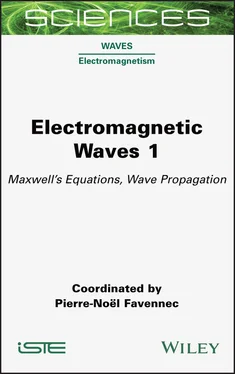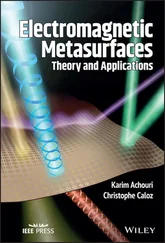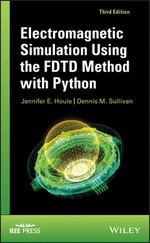5 Preface
6 Begin Reading
7 Appendix 1 Mathematical Formulae1
8 Appendix 2 Vector Calculations
9 Appendix 3 Frequency Spectrum
10 Appendix 4 The Decibel
11 Appendix 5 The International Visibility Code
12 List of Acronyms and Constants
13 List of Authors
14 Index
15 End User License Agreement
1 v
2 iii
3 iv
4 ix
5 x
6 xi
7 xii
8 1
9 2
10 3
11 4
12 5
13 6
14 7
15 8
16 9
17 10
18 11
19 12
20 13
21 14
22 15
23 16
24 17
25 18
26 19
27 20
28 21
29 22
30 23
31 24
32 25
33 26
34 27
35 28
36 29
37 30
38 31
39 32
40 33
41 34
42 35
43 36
44 37
45 38
46 39
47 40
48 41
49 42
50 43
51 44
52 45
53 46
54 47
55 48
56 49
57 50
58 51
59 52
60 53
61 54
62 55
63 56
64 57
65 58
66 59
67 60
68 61
69 62
70 63
71 64
72 65
73 66
74 67
75 68
76 69
77 70
78 71
79 72
80 73
81 74
82 75
83 76
84 77
85 78
86 79
87 80
88 81
89 82
90 83
91 84
92 85
93 86
94 87
95 88
96 89
97 90
98 91
99 92
100 93
101 94
102 95
103 96
104 97
105 98
106 99
107 100
108 101
109 102
110 103
111 104
112 105
113 106
114 107
115 108
116 109
117 110
118 111
119 112
120 113
121 114
122 115
123 116
124 117
125 119
126 120
127 121
128 122
129 123
130 124
131 125
132 126
133 127
134 128
135 129
136 130
137 131
138 132
139 133
140 134
141 135
142 136
143 137
144 138
145 139
146 140
147 141
148 142
149 143
150 144
151 145
152 146
153 147
154 148
155 149
156 150
157 151
158 152
159 153
160 154
161 155
162 156
163 157
164 158
165 159
166 160
167 161
168 162
169 163
170 164
171 165
172 166
173 167
174 168
175 169
176 170
177 171
178 172
179 173
180 174
181 175
182 176
183 177
184 178
185 179
186 180
187 181
188 182
189 183
190 184
191 185
192 186
193 187
194 188
195 189
196 190
197 191
198 192
199 193
200 194
201 195
202 196
203 197
204 198
205 199
206 200
207 201
208 202
209 203
210 204
211 205
212 206
213 207
214 208
215 209
216 210
217 211
218 212
219 213
220 214
221 215
222 216
223 217
224 218
225 219
226 220
227 221
228 222
229 223
230 224
231 225
232 226
233 227
234 228
235 229
236 230
237 231
238 232
239 233
240 234
241 235
242 236
243 237
244 238
245 239
246 240
247 241
248 243
249 244
250 245
251 246
252 247
253 248
254 249
255 250
256 251
257 252
258 253
259 254
260 255
261 256
262 257
263 258
264 259
265 260
266 261
267 262
268 263
269 264
270 265
271 266
272 267
273 268
274 269
275 270
276 271
277 272
278 273
279 275
280 276
281 277
282 279
283 280
284 281
285 282
286 283
287 284
288 285
SCIENCES
Waves , Field Directors – Pierre-Noël Favennec, Frédérique de Fornel
Electromagnetism , Subject Head – Pierre-Noël Favennec
Electromagnetic Waves 1
Maxwell’s Equations, Wave Propagation
Coordinated by
Pierre-Noël Favennec

First published 2020 in Great Britain and the United States by ISTE Ltd and John Wiley & Sons, Inc.
Apart from any fair dealing for the purposes of research or private study, or criticism or review, as permitted under the Copyright, Designs and Patents Act 1988, this publication may only be reproduced, stored or transmitted, in any form or by any means, with the prior permission in writing of the publishers, or in the case of reprographic reproduction in accordance with the terms and licenses issued by the CLA. Enquiries concerning reproduction outside these terms should be sent to the publishers at the undermentioned address:
ISTE Ltd
27-37 St George’s Road
London SW19 4EU
UK
www.iste.co.uk
John Wiley & Sons, Inc.
111 River Street
Hoboken, NJ 07030
USA
www.wiley.com
© ISTE Ltd 2020
The rights of Pierre-Noël Favennec to be identified as the author of this work have been asserted by him in accordance with the Copyright, Designs and Patents Act 1988.
Library of Congress Control Number: 2020937434
British Library Cataloguing-in-Publication Data
A CIP record for this book is available from the British Library
ISBN 978-1-78945-006-4
ERC code:
PE2 Fundamental Constituents of Matter
PE2_6 Electromagnetism
Pierre-Noël FAVENNEC
ArmorScience, Lannion, France
Any electric charge set in motion produces electromagnetic radiation which propagates in space. This property is the basis of radioelectric, or photonic radiation production, used in particular in radio, television and communication systems among others. Any system supplied with electricity, or any element provided with electric charge, emits electromagnetic radiation and generates an electric and/or magnetic field in its close, or even distant, vicinity which is known as an “electromagnetic field”.
Before Maxwell’s work, we understood physical reality in terms of material points. After it, we represented physical reality with continuous fields. The concept of a field finds its origin, and its name, in the idea of describing a physical phenomenon from an underlying medium, which would explain the physical properties of space (a field of forces for a field of wheat subjected to the wind). Following Maxwell’s research, the fields acquired an autonomous existence and reached the status of physical beings in their own right, no longer describing “the place where” but “the thing that”. This movement was largely supported by the development of the mathematical formalism of the fields, in terms of partial differential equations. This, with regard to electricity and magnetism, is the content of Maxwell’s theory which he published in 1861.
Maxwell is one of the greatest scientists, who changed our view of the world. He made a decisive contribution to the unifying and synthetic vision of electricity and magnetism. He showed that two domains, that of electric charges and their interactions and that of currents and magnetism, were only two facets of the same problem. Synthesized by four equations combining in the same formalism their respective characteristic magnitudes. He stated these interactions in clear mathematical language: Maxwell’s equations. The vision of a universe formed by particles was succeeded by a world governed by fields, acting from a distance.
Читать дальше













